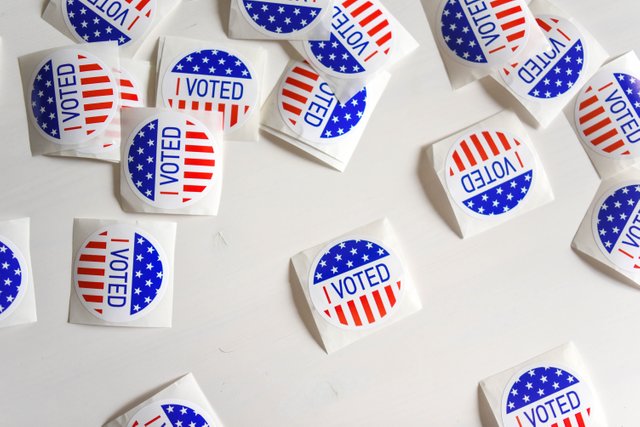Sanders versus Trump: a struggle between two political technologies and that is more important than we think.


Since Cambridge Analytica employee Christopher Wylie gave the whole show away, we know more or less Trump's approach during the 2016 elections. All kinds of apps were used to collect data from millions of Americans. Psychological profiles were drawn up on the basis of this data so that highly targeted political propaganda could be sent to unsuspecting American voters.
In itself, this was not new. In 2008, Obama invested more than $100 million in technological innovation to reach voters through social media. During the 2012 Obama campaign, the focus was on micro-targeting and data mining. Freely translated: by collecting data, target groups were created who subsequently received advertisements specially developed for them.
Cambridge Analytica therefore continued to build on an evolution that had been going on for several years. What was disturbing about Cambridge Analytica was rather the way in which the existing technology was used. The data that the company managed to seize were obtained in a devious manner and the company set up active disinformation campaigns. It involved a form of data-driven, high-tech psychological warfare with the aim of influencing public opinion.
The purpose of Cambridge Analytica was primarily to change the minds of the people by disseminating specific information tailored to different psychological profiles. Specifically: suppose Cambridge Analytica, based on collected data, knows that you are anxious about life, then Cambridge Analytica will not bombard you with an advertisement by Trump, but rather with a film in which young people of color, for example, beating up a white young person. This fear, generated by targeted messages, makes you more susceptible to Trump's message.
It is unclear how effective this type of manipulation was, and whether Trump actually owes his victory to it. Opinions are divided on this. But Trump's victory has aroused interest in this type of technology and paved the way for its further generalization.
Trump 2020
Cambridge Analytica had to close down after the revelations of former employees, but that didn't end the danger. The knowledge and techniques that the company developed will, of course, continue to exist. Everything indicates that in 2020 the Trump campaign team wants to again massively invest in Big Data and large-scale manipulation. In recent years, the Trump team has continued to invest in technological innovation and, moreover, the Trump campaign team once again can use the data it collected during the 2016 campaign. The lead over the democrats is considerable in that regard.
The hunt for data from potential voters continues unabated. One of the newest toys for that is called geofencing. The principle is relatively simple. Suppose you enter a certain place - a shopping center, a church, a demonstration - then your data will be collected, kept and passed on. And that's a goldmine of information for political marketers: you can link target groups to places and behavior and send them targeted advertisements based on that.

The new front line in sending targeted advertisements will be the text message. Both Democrats and Republicans know that text messages, unlike emails and telephones, are picked up much faster. Normally, according to American rules, it is forbidden to bombard voters with unsolicited messages, but thanks to peer-to-peer software, these regulations can be circumvented.
In addition to text messages, social media will, of course, remain extremely important. In that respect, a repeat of what happened during the 2016 campaign can be expected, but then more intense and sophisticated. The Trump team will again attempt to manipulate voters through disinformation and fake news. Anonymous bots, fake news websites, smearing campaigns, ... The arsenal of techniques is well-known.
Worrying in this regard is that Mark Zuckerberg has announced that there will be no active intervention with regard to the content of political advertisements on Facebook. In other words, Facebook gives free play to the Trump campaign team.
One of the biggest advantages that Trump has over the Democrats is that it has a large "amplification network". Messages are frequently reproduced by a large network of Twitter accounts, blogs, websites, vloggers and media channels. In contrast to the left or liberal press, the right-wing network is almost uncritical with regard to the truthfulness of the information. Liberal and leftist media are generally more critical, even towards the democratic candidates they support.

Vertical versus horizontal
The Trump campaign will be, just like its previous one, a vertical campaign. This means that the campaigns are led and managed by a limited group of professionals. It is a form of campaigning that differs from commercial marketing in little to nothing. Citizens are considered to be consumers who need to 'buy' a certain political product, in this case Trump. The main focus is on efficiency. Ads are sent to those groups and areas that can make a crucial difference through their voting behavior. With a minimum of resources, an attempt is made to achieve a maximum electoral effect.
Democrats also generally use vertical campaigns, but with Sanders, a different model of campaigning emerged that is much more horizontal. In 2016, they were forced to make that choice. There was simply not enough money to set up a campaign run by professionals, so the Sanders campaign needed volunteers. A wild guess, but one that worked amazingly enough. Sanders, that old senator from Vermont, became a phenomenon in no time, a name with global resonance. And that without the use of spectacular technologies and the money from major donors. That was unseen.
Big Organizing
Sanders places Big Organizing opposite Trump's Big Data. Sanders and his team start from the idea that they are a movement that, through a well-thought-out organization, must produce a campaign and a president, rather than the other way around. The basic idea - and also the guess - is that there is a lot of energy in society, that many people want to see change. The movement wants to reach out to them and wants to convert their urge for direct and effective change into action. They want people to believe that they are change agents in society.
It is tempting to see Sanders' campaign as a bottom-up campaign, but I think that's not really a correct representation. Because of course Sanders and his people also have a team of professionals who manage and shape the campaign. Rather than bottom-up, it is a peer-to-peer campaign. The Sanders campaign can fall back on many hundreds of thousands of volunteers. Volunteers are encouraged to constantly engage other volunteers: they stimulate each other to come together physically, to set up groups and to look for funds.

A good example of this is the Bern app that was developed for this campaign. Sanders supporters are encouraged to download the app and import their contacts into the app. Whoever wants to support Sanders is then asked to install the app themselves and to invite people. The app also reminds you when it's time to register and where and how you can vote.
People driven versus data driven
People driven versus data driven. That is also a way in which you can describe the difference between the Sanders and Trump campaigns. It is not that Sanders doesn't use data, but he relies more on the data that people openly share with each other than on the obscure form of data mining that the Trump campaign uses. Sanders focuses on the fact that people can best estimate their own circle of acquaintances, convince each other and organize themselves. All this starts from a very strong trust in volunteers. The Trump campaign, on the other hand, is based on distrust and passivity. To a certain extent, the ideology of the candidates is therefore also reflected in the political techniques that are used.

Although it is obvious that Sanders 'campaign is more democratic than Trump's in every possible way and can act as a positive alternative to manipulation based on Big Data, it is also important to view Sanders' campaign with a critical eye. On Jacobin, for example, Sanders' campaign is praised as the means par excellence for resuscitating the working class as a political subject. The Sanders campaign itself is also strongly committed to the idea that they are a "movement". "It's not about me, it's about us" is one of the slogans that Sanders often uses.
Election campaigns are therefore one of the few channels currently available to engage and politicize a mass working-class audience, reconstitute the working class as a political subject, and create a more favorable environment for workers to organize both inside and outside the electoral arena. The Sanders campaign is priming working people to think of themselves as members of a class with an interest in political revolution. How could this be anything but a boon to the Left and the prospects for labor movement revitalization?
The attempts of Sanders and his followers to set up a mass movement are sincere, but the fundamental weakness of such design remains, of course, that the raison d'être for the movement remains tied to winning the elections. To put it differently: if Sanders doesn't win the elections, it will drain the power from the movement as it currently exists. The "us" that Sanders refers to also ultimately only exists through him and the elections that he will or will not win, whether he likes it or not.
Media consumers
The struggle between Sanders and Trump is a struggle between two political technologies and that is more important than we think. If Sanders manages to get elected as the democratic candidate or, who knows, as president, then his form of campaigning could become the new norm. Then we get a shift from big data to big organizing. That could herald strong democratization of society, despite the shortcomings.
If Trump wins again, we will get more of the same. Political parties - both on the right and on the left - will be drawn to a vertical model, in which data is placed above people, in which influencing will be more important than horizontal work. Still more than today, politics will be seen as marketing pur sang in which citizens will be seen as passive and influenceable media consumers.

Sources:
- How Data and Micro-Targeting Won the 2012 Election for Obama - Antony Young-Mindshare North America
- The Billion-Dollar Disinformation Campaign to Reelect the President
- How Political Campaigns Are Using 'Geofencing' Technology To Target Catholics At Mass
- Facebook says it won't back down from allowing lies in political ads
- The Bernie Sanders Campaign Can Help Inspire the US Working Class to Fight for Itself